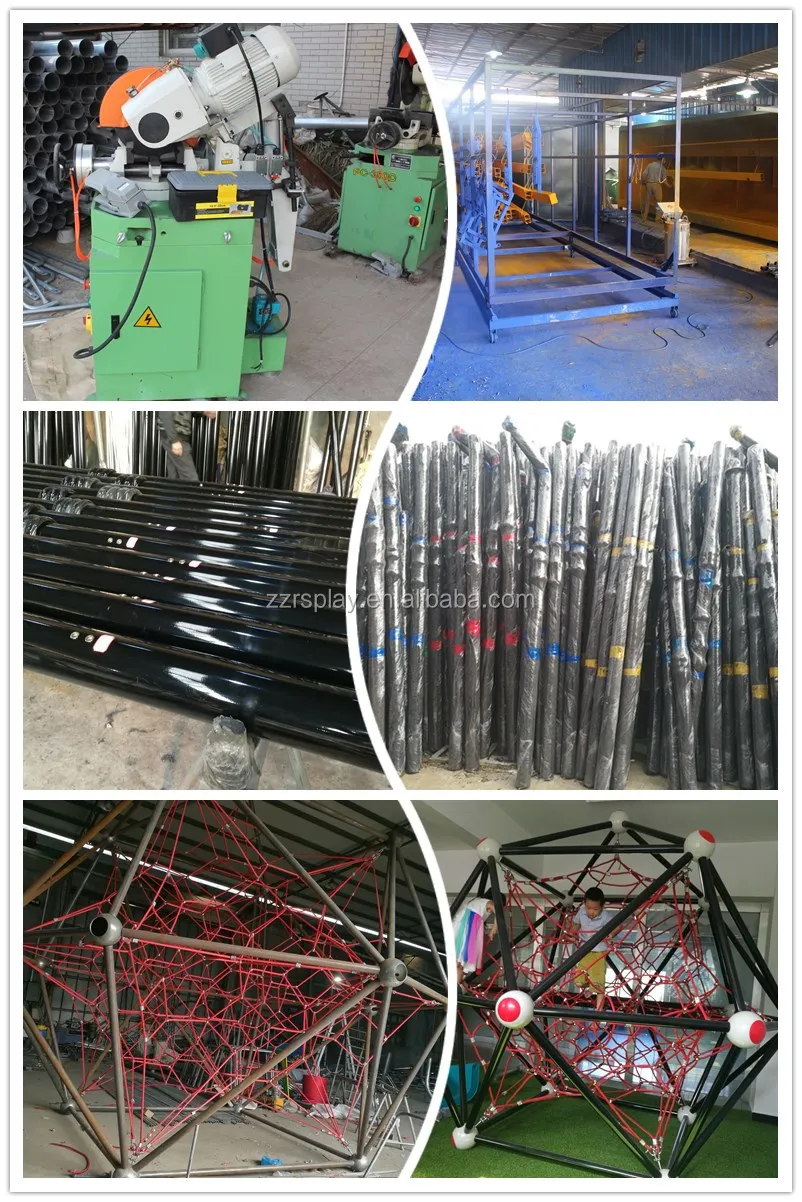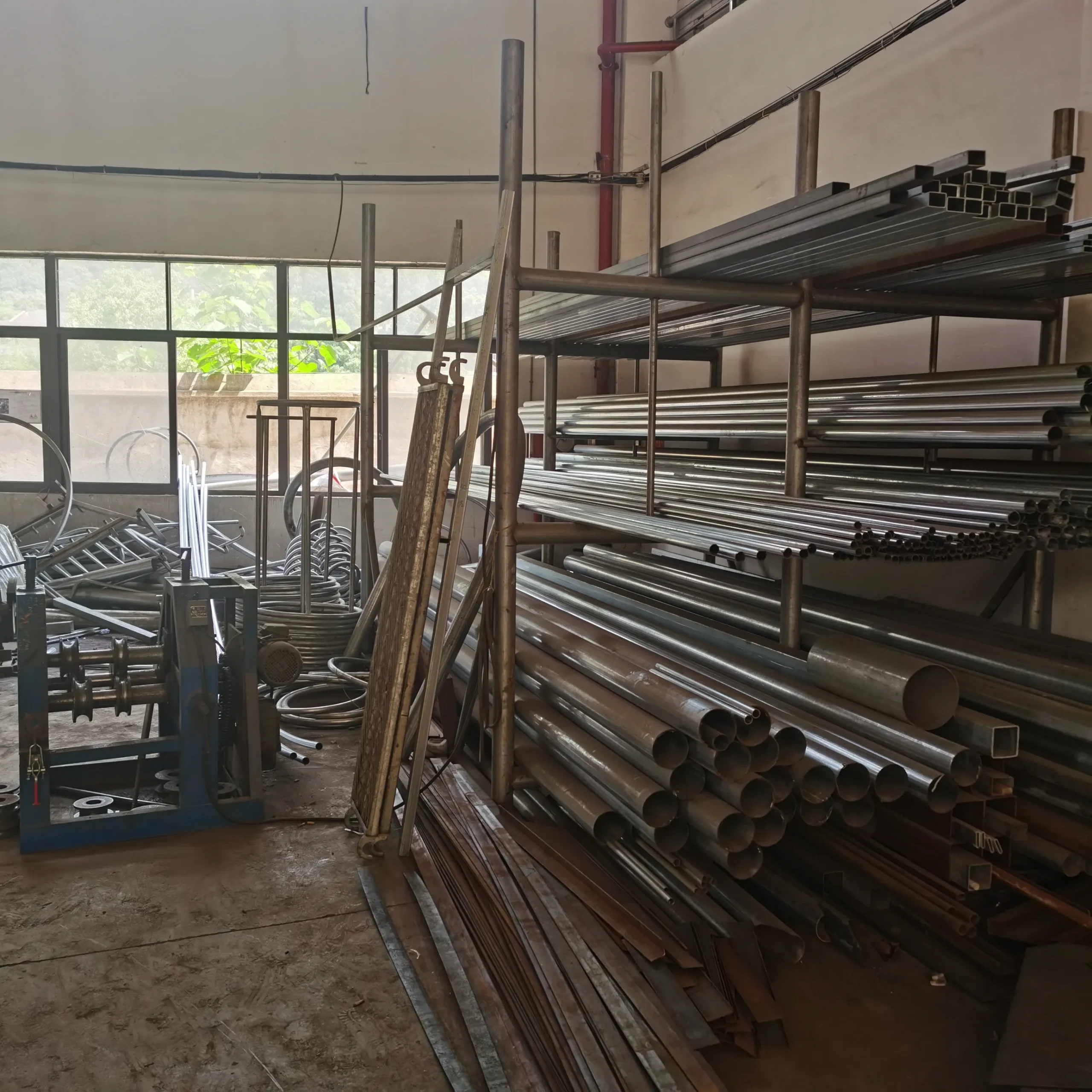
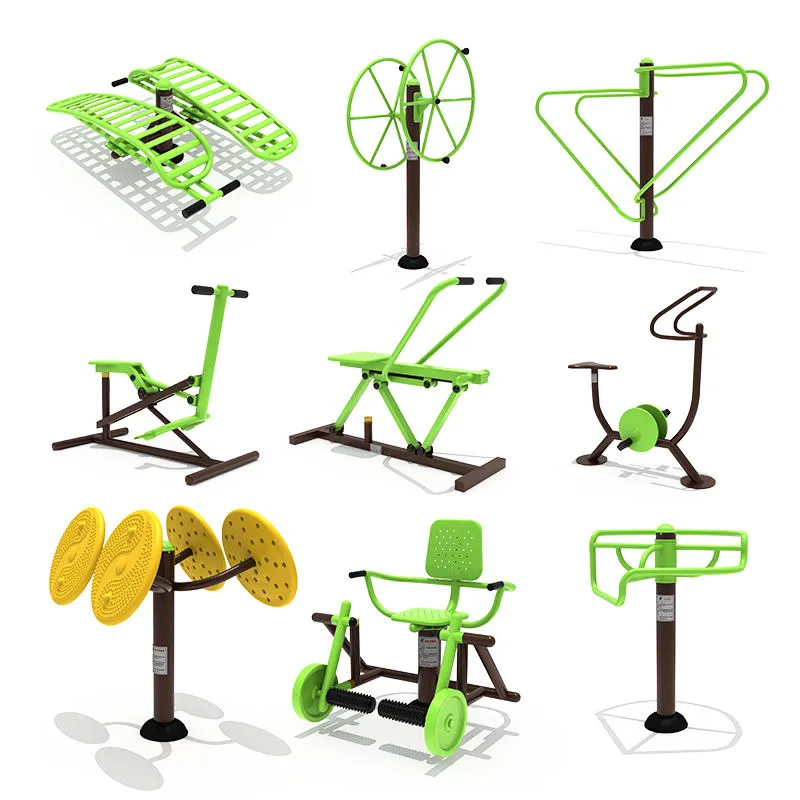
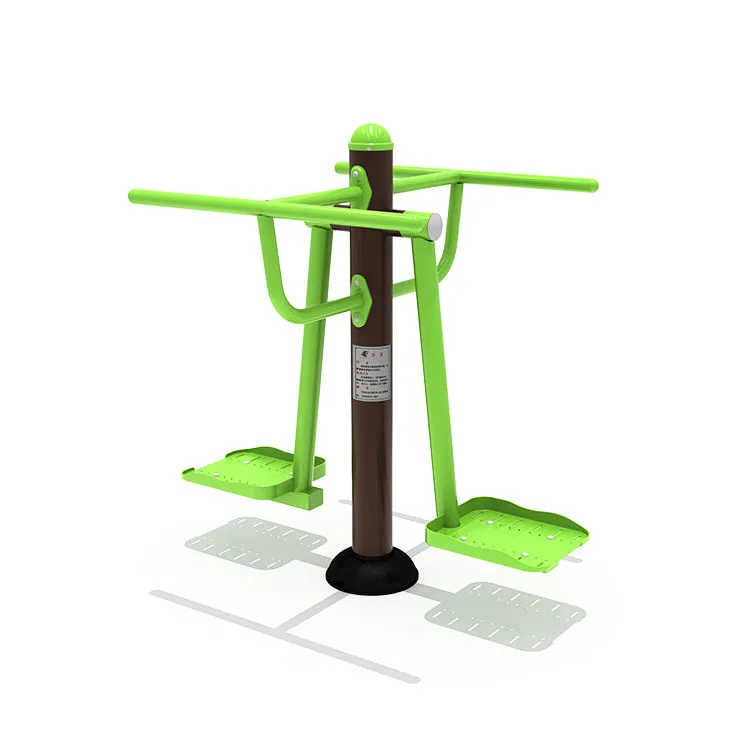

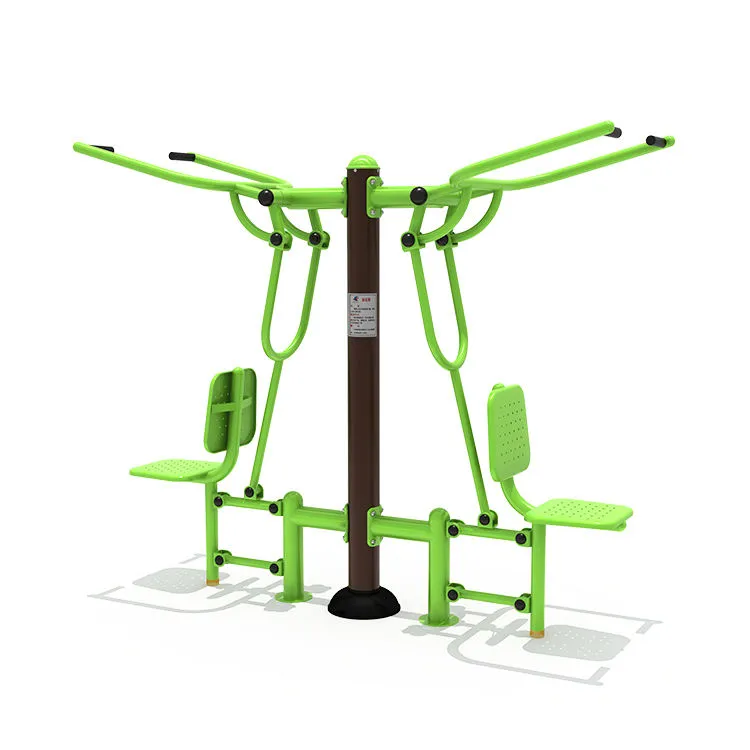

Manufacturer in China
SKU:
fitness outside
Fully customizable
Fall Size:
160*135*100 cm
100*63*122 cm
160*75*220 cm
170*150*120 cm
180*35*120 cm
Age Grounp:
up 12 years
Use Zone:
200*150 CM
250*200 CM
Capacity:
1 person /set
2 persons /set
| Product Name | Outdoor Fitness Equipment |
| Color | Optional |
| Features | Exercise body |
| Applicable areas | amusement parks, kindergartens, residential areas, supermarkets, schools, shopping centers, hotels, airports, hospitals, backyards, community parks and other children’s play centers |
| Material details | 114 Galvanized Steel, 38Galvanized Steel,an extra baked-on powder coating,Engineering Plastics: Includes HDPE (high-density polyethylene) and PP (polypropylene), Stainless Steel screws, Rubber handle covers |
| Advantage | 1. Anti-UV |
| 2. Anti-static | |
| 3.Security | |
| 4.Environmental protection | |
| 5.Color is not easy to fade | |
| Age range | Kid/Adult |
| Packing | cotton plastic film, carton, woven bag |
| Installation | Professional and useful CAD instruction, engineer can come to install |
| Using life | 5-7 years |
| Quality | High temperature resistant cold and edge protection |
| Special Service | Free design according to your area size and requirement. |
Pull-up Bar
Core Function: Used for performing pull-ups and hanging leg raises. It targets upper body strength, specifically engaging the back and arm muscles.
Push-up Stand
Core Function: Assists in completing standard push-ups while reducing pressure on the wrists. It focuses on strengthening the chest, shoulder, and arm muscles.
Waist Twister
Core Function: Enables waist rotation movements to activate the waist and abdominal muscles, improving waist flexibility. It typically features a circular pedal with handrails.
Leg Press Machine
Core Function: Allows users to step on the pedals and push them outward with force. It works the front of the thighs (quadriceps), glutes, and calf muscles.
Walking Machine
Core Function: Simulates a “space walk” motion, with alternating leg swings. It enhances lower body coordination and cardiopulmonary function, making it suitable for low-intensity aerobic exercise.
Parallel Bars
Core Function: Suitable for exercises like support swings and dips. It strengthens the chest muscles, arms (triceps), and improves core stability.
Sit-up Bench
Core Function: Designed with an inclined or flat surface to assist in doing sit-ups and crunches. It specifically targets and strengthens the abdominal muscles.
Arm Rotator
Core Function: Users hold the rotating discs and turn them slowly to mobilize the shoulder joints, relieve shoulder stiffness, and enhance the control of shoulder muscles.
Balance Beam
Core Function: A narrow, long bar-shaped equipment. By standing or walking on it, users can improve balance ability and lower body stability. It is commonly found in community fitness areas.
Chest Press Machine
Core Function: In a seated position, users push the front handles outward. It strengthens the chest muscles, front of the shoulders, and arm (biceps) muscles.
“Public fitness equipment” refers to free-to-use exercise tools installed in shared, open spaces like parks, community centers, school yards, or public squares. Designed for all ages and fitness levels, it includes gear such as pull-up bars, waist twisters, walking machines, and sit-up benches—most of which are durable, weather-resistant, and easy to operate. Its main purpose is to let people conveniently do physical activities (like strength training or light cardio) without needing a gym membership, supporting community-wide health and fitness.
Check equipment condition first
Inspect the equipment for visible damage (e.g., loose bolts, cracked parts, broken handles) or signs of wear (rusted metal, frayed straps) before using it. If something looks unsafe, do not use it and report the issue to local management (e.g., park staff, community officials) if possible.
Warm up briefly
Do light warm-up exercises (e.g., arm circles, leg stretches, brisk walking) for 5–10 minutes before using the equipment. This loosens muscles and joints, reducing the risk of strains or pulls.
Follow usage guidelines
Stick to the intended use of each tool—for example, do not stand on a waist twister’s handrails or use a pull-up bar for unapproved tricks. Many public equipment pieces have simple instructions (e.g., “Max weight: 200kg”) posted nearby; follow these to avoid overloading the gear.
Start with low intensity
If you’re new to a piece of equipment, begin with slow, gentle movements (e.g., smaller swings on a walking machine, lighter pushes on a leg press) to get used to its feel. Gradually increase intensity only when you’re comfortable.
Maintain proper posture
Keep your body aligned to avoid strain: for example, keep your back straight on a sit-up bench, avoid leaning too far forward on a leg press, and engage your core for stability on balance-focused gear (e.g., balance beams).
Stay aware of surroundings
Public fitness areas can be busy—watch for other users (especially children or seniors) to avoid collisions. Do not use equipment while distracted (e.g., looking at your phone) as this increases the risk of falls.

